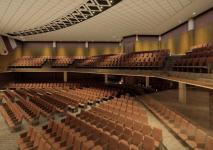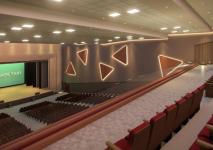Principle of Acoustic
Principles of Acoustics
Acoustics is the study of sound and how it travels through space. It is a complex field, but there are a few basic principles that can help you understand how acoustics works.
Sound waves: Sound waves are vibrations that travel through a medium, such as air or water. The frequency of a sound wave is how many vibrations it makes per second, and it is measured in hertz (Hz). The wavelength of a sound wave is the distance between two consecutive peaks of the wave, and it is measured in meters.
Reflection: When sound waves hit a surface, they can be reflected back. The amount of reflection depends on the properties of the surface. Hard surfaces, such as concrete, reflect sound well, while soft surfaces, such as carpets, absorb sound well.
Reverberation: When sound waves bounce off of multiple surfaces, they can continue to be heard for a period of time. This is called reverberation. The amount of reverberation depends on the size and shape of the room, as well as the materials used in the construction.
Absorption: When sound waves hit a surface, they can be absorbed by the surface. The amount of absorption depends on the properties of the surface. Sound-absorbing materials, such as acoustic foam, are designed to absorb sound well.
Interference: When two sound waves meet, they can interfere with each other. If the waves are in phase, the interference will be constructive, which means that the sound will be louder. If the waves are out of phase, the interference will be destructive, which means that the sound will be quieter.
Principles of Acoustics in Auditoriums:
The principles of acoustics are essential for understanding how sound behaves in auditoriums. By understanding these principles, you can design an auditorium that sounds its best.
Some of the key principles of acoustics in auditoriums include:
- The shape of the auditorium: The shape of the auditorium can have a significant impact on the acoustics. A rectangular auditorium with parallel walls will create more echo and reverberation than an auditorium with a curved or angled ceiling.
- The materials used in the construction: The materials used in the construction of the auditorium can also have a significant impact on the acoustics. Hard materials, such as concrete, reflect sound well, while soft materials, such as carpets, absorb sound well.
- The placement of the speakers: The placement of the speakers in the auditorium is also important for good acoustics. The speakers should be placed so that the sound waves they emit reach all parts of the auditorium evenly.
- The use of sound-absorbing materials: Sound-absorbing materials can be used to improve the acoustics of an auditorium. These materials can be placed on the walls, ceiling, and floor of the auditorium to help absorb sound waves and reduce reverberation.
By following these principles, you can design an auditorium that sounds its best and provides an enjoyable experience for audiences.



